The stage was set. The players for a drama of tragic proportions assembled. Two leads waited their cue. Already on stage were fine dead fuels from previous growing seasons, low moisture in February, and super low humidities. The next player in the drama entered, high wind speeds. This article is part 3 of 3 articles exploring weather conditions that set the stage for the Northwest Oklahoma Complex Fires that broke out on Monday, March 6, 2017.
(Photo: Terena Burke Bridwell/Barby Ranch Beaver County)
At 11:00 AM March 6th winds across Beaver County were out of the southwest. Wind speed at the Oklahoma Mesonet Beaver site was 37 miles per hour. To the west, wind speeds at Goodwell and Boise City were 43 miles per hour.
Unnoticed a spark entered the stage. Small as it was, it triggered an inferno. In the dense, dry fuel high winds quickly turned that spark into flames that flared up and rushed forward. The Starbuck fire ignited northeast of Beaver. In its early stages it appeared as two yellow pixels on a GOES-16 satellite image. It is 11:19 AM CST (17:19 UTC).
(Source: Scott Bachmeier/CIMSS Satellite Blog/University of Wisconsin-Madison)
Wind speed at Beaver at noon was still averaging 37 miles per hour. The noon wind gust was 48 miles per hour.
At 2:00 PM, the wind speed at Beaver was 42 miles per hour. The wind gust was 54 miles per hour.
The Starbuck Fire at 2:00 PM was well defined across the border of Oklahoma and Kansas. Three new fires had started in Kansas. What will be the 283 Fire in Oklahoma was in its infancy.
(Source: Scott Bachmeier/CIMSS Satellite Blog/University of Wisconsin-Madison)
A wind gust map from 4:50 PM showed the coming wind shift at Eva and Hooker Mesonet sites. Wind gusts at Eva and Hooker were in the thirties out of the northwest.
The wind speed at 5:00 PM at Beaver was 30 miles per hour. Wind gusts were down too, 40 miles per hour as the wind shift approached.
By 6:00 PM the winds across the entire Panhandle had shifted from southwest to northwest.
The multiple fires large fires in Oklahoma and Kansas were starting to show movement to the southeast on the 6:00 PM GOES-16 satellite image. Southeast of the Starbuck Fire in Oklahoma were the 283 fire and Selman fire. The large fire threatening Ashland, Kansas was to the fire farthest to the northeast. Two large fires were visible in Texas.
(Source: Scott Bachmeier/CIMSS Satellite Blog/University of Wisconsin-Madison)
By 8:00 PM, wind speeds had dropped into the teens over the Starbuck Fire complex and 283 Fire areas. Wind speeds were in the twenties over the Selman Fire.
Fire movement to the southeast was more pronounced on an 8:00 PM GOES-16 satellite image.
(Source: Scott Bachmeier/CIMSS Satellite Blog/University of Wisconsin-Madison)
Part 1 explored the role February’s weather played in the Northwest Oklahoma Complex Fires. Part 2 looked at the low relative humidities in March that drove down dead fuel moisture.
The Starbuck Fire and additional fires in Oklahoma, Kansas, and Texas tragically caused 6 fatalities, thousands of livestock deaths, wildlife losses, hundreds of miles of lost fencing, the destruction of at least twenty homes, and an undetermined number of structures.
Thanks to all of the fire fighters. Their hard work and tireless efforts brought control to monster fires, saving lives and property. Thanks too for all of the generous donations in so many forms that are helping folks through the devastation of these tragic fires in Oklahoma, Kansas, and Texas.
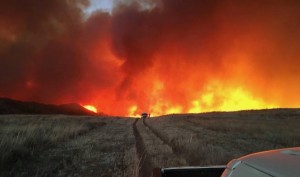
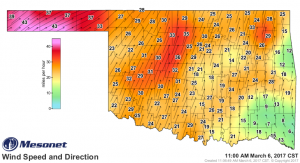
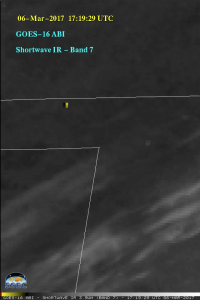
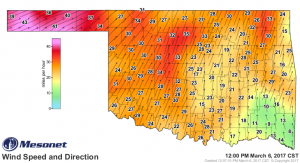
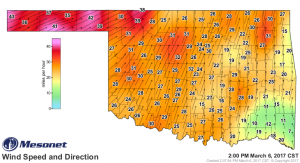
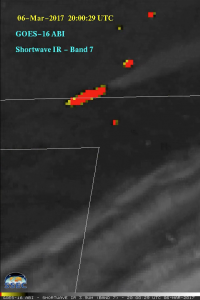
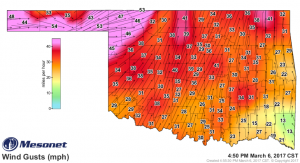
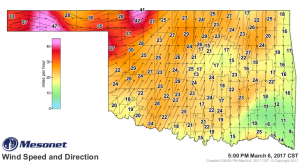
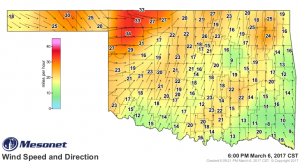
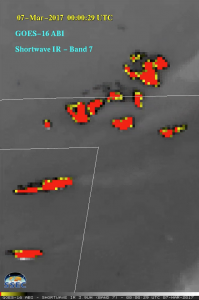
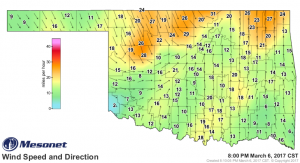
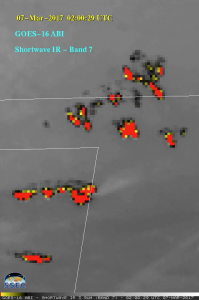
Excellent article depicting the forces behind these devistating fires.
Incredible satillite images.